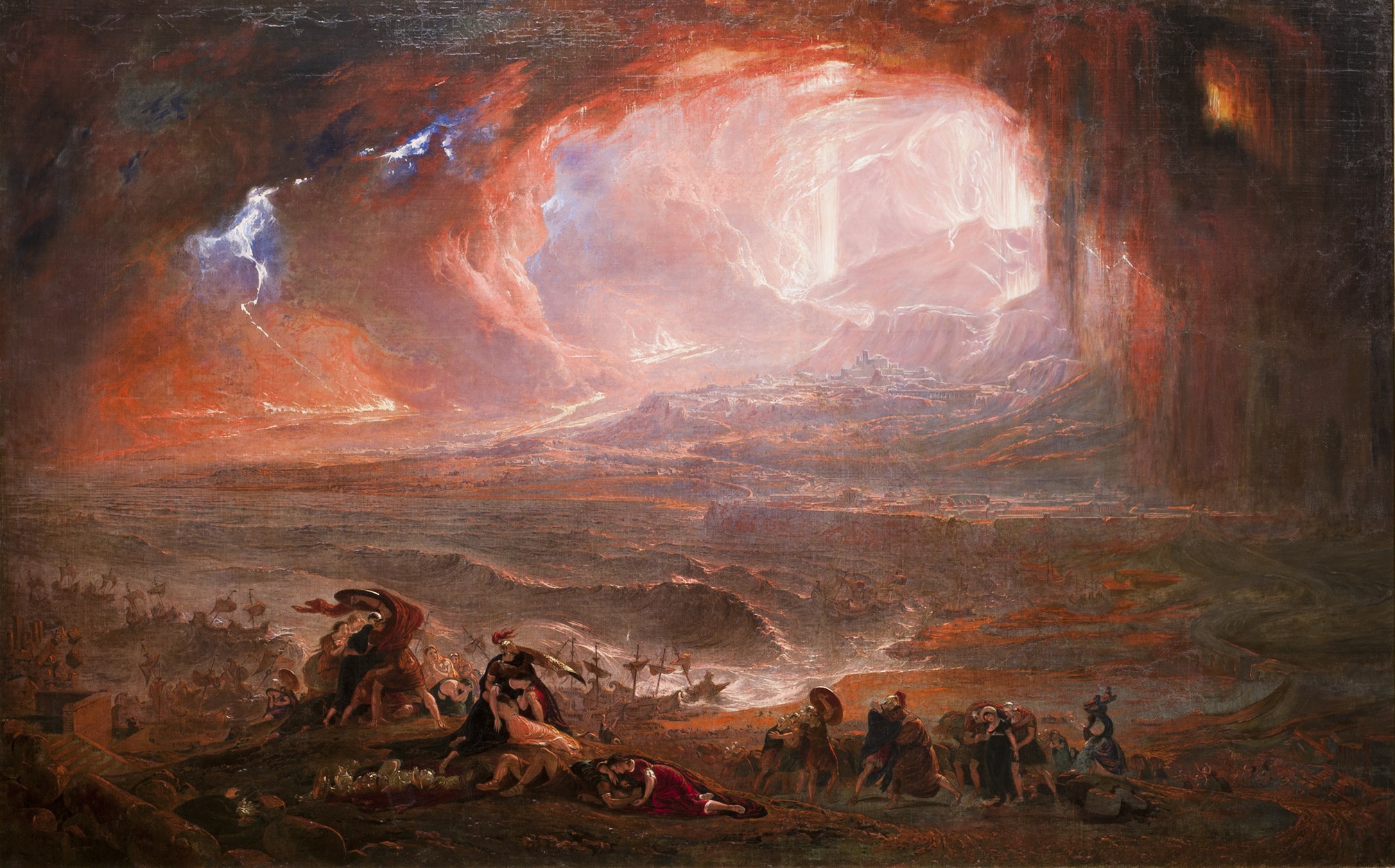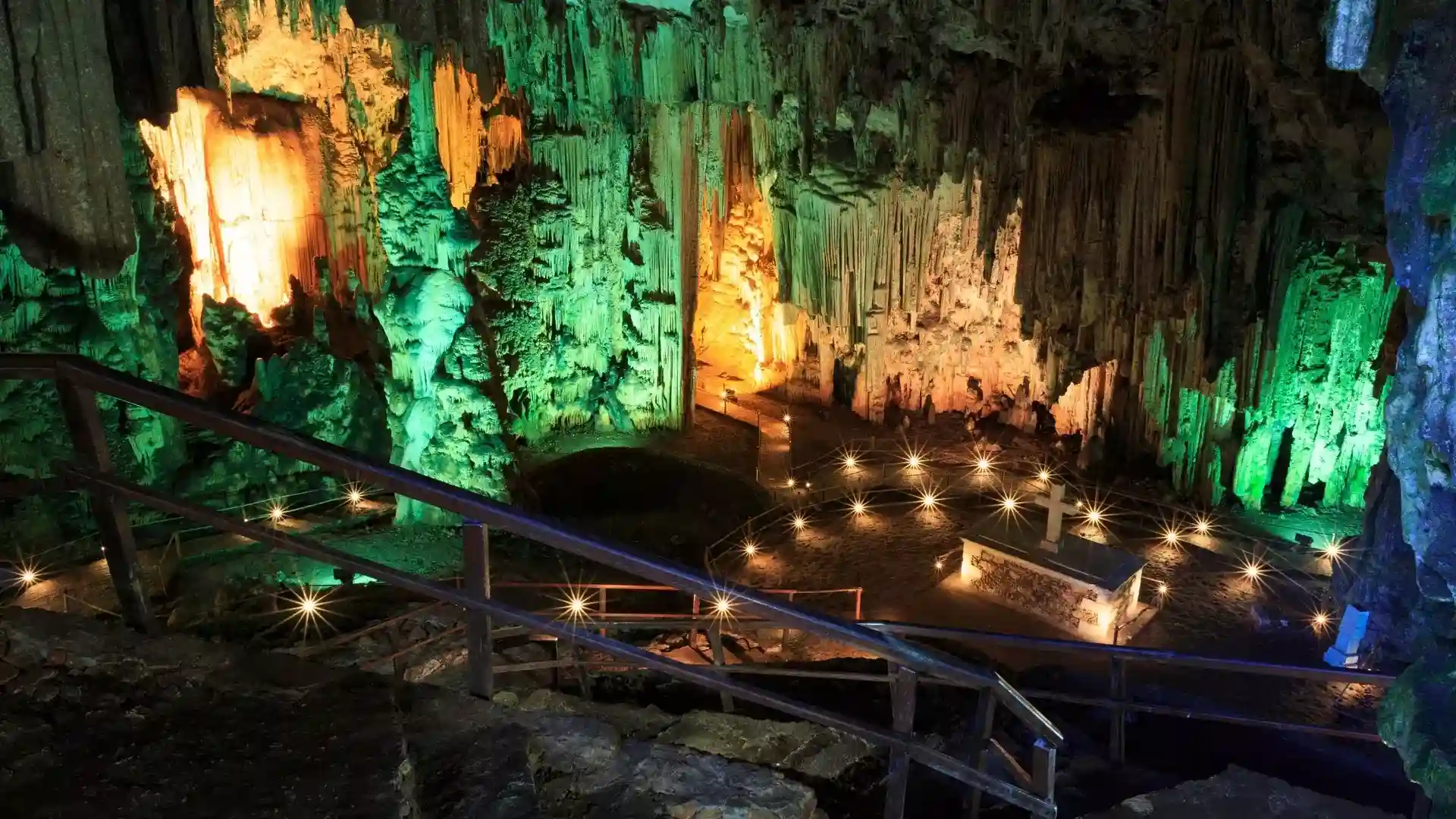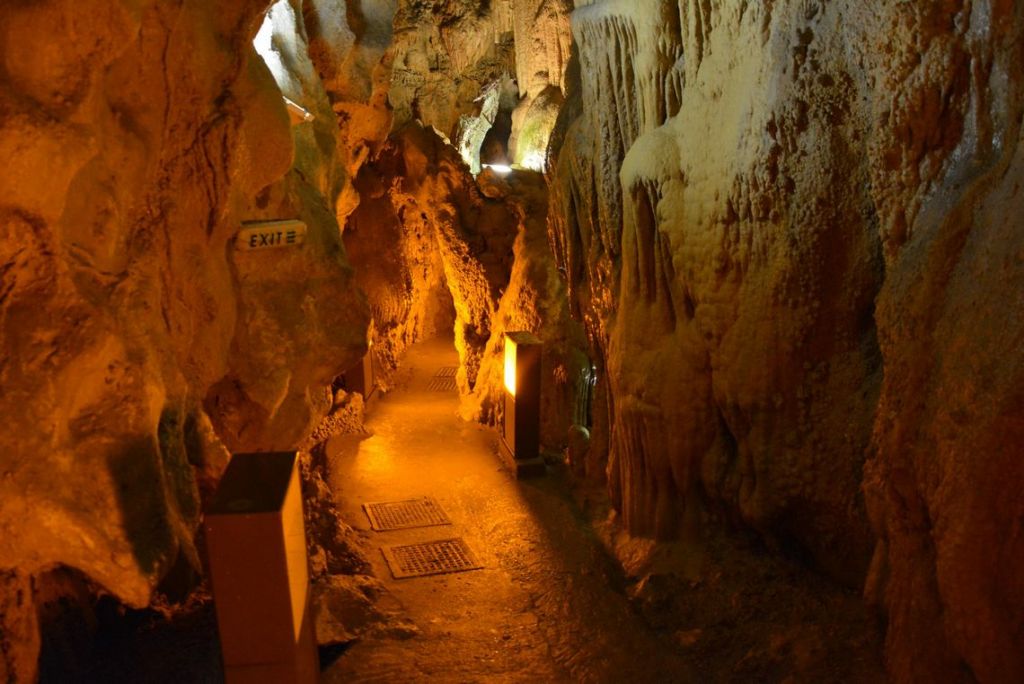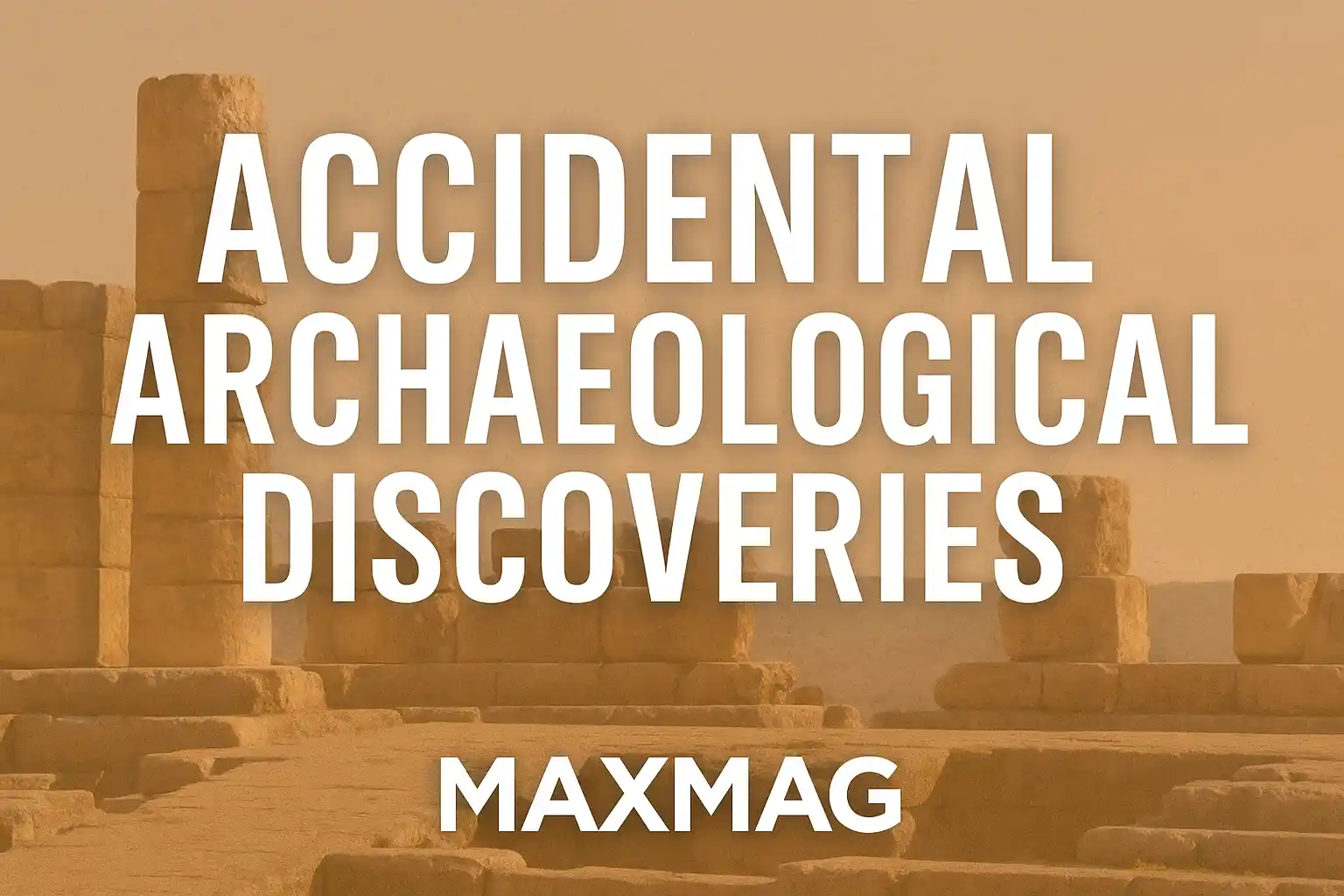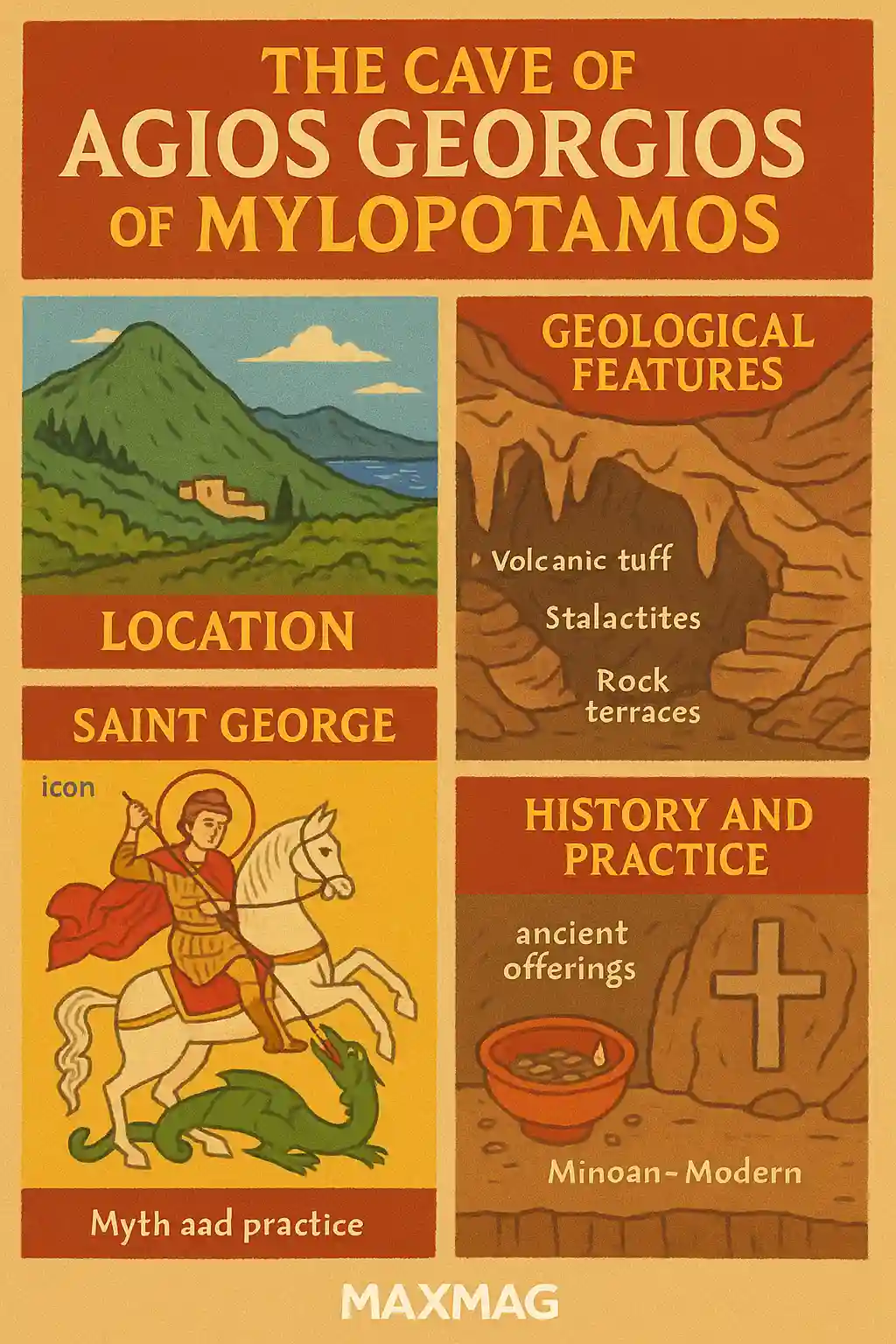
Tucked away near the scenic village of Mylopotamos on Crete’s northwestern foothills lies a breathtaking natural marvel: the Cave of Agios Georgios of Mylopotamos. Far older than the nearby monastery, this cavern is steeped in legend, geology, and spiritual resonance. For centuries, locals have regarded it as sacred—a place of quiet reflection, rites of passage, and mythic association with Saint George himself.
This in-depth exploration reveals how the Cave of Agios Georgios of Mylopotamos reflects the intersection of natural beauty, folklore, and human interaction in Crete’s vibrant cultural landscape.
The Cave’s Hidden Location and Landscape
The cave is situated just beneath the slopes of Mount Ida in the Mylopotamos region, blending mountain, plain, and coastal views. Though relatively small in scale compared to grander Greek systems, its position offers a profound sense of isolation, sanctuary, and connection to the earth.
A short, woodland-lined trail leads to the entrance—a gaping natural arch flanked by olive trees and stone terraces. Light filters in, revealing centuries-old inscriptions and natural openings in the chamber ceiling, giving the space a cathedral-like atmosphere.
This region, known for its geological richness, also hosts other sites—like the mythic Cave of Zeus—making the Cave of Agios Georgios part of a broader constellation of sacred grottoes. It’s even mentioned in guides about Greece’s miraculous caves, yet retains its own intimate mystery.
Geological Origins: A Tuff-Carved Sanctuary
Unlike the limestone caves common in mainland Greece, Agios Georgios’s cave is carved into volcanic tuff—a porous, easily shaped rock. Formed after ancient eruptions, tuff’s layered texture and permeability lent itself to both cave formation and human modification.
Over time, minor seismic activity and rainwater erosion enlarged existing voids into a multi-chambered space, creating:
-
Natural air-vent shafts
-
Gentle slopes and terraces inside
-
Multiple entrance points at varying elevations
The internal structure—complete with water-worn floors and occasional bowls of seeped water—helps explain why humans used this cave: it was naturally hospitable, easily adapted, and filled with resonant acoustics.
Myth and the Cult of Saint George
While the monastery honors Saint George, the cave itself is believed to predate Christian worship and was later “baptized” with Christian meaning. Local oral tradition suggests that Saint George himself once prayed here, blessing the cavern with protection and healing presence.
Pilgrims come to the cave to leave oil lamps, crosses carved into stone, or handwritten prayer notes. On the feast day of April 23, clergy lead small congregations to celebrate with Byzantine hymns, blending geology with gospel.
This blending of pagan cave veneration and Christian practice is typical of Greek sacred grottos—spaces like the Cave of Pan or the Cave of Agia Sophia—where myth and faith intersect naturally.
Archaeological Evidence and Local Rituals
While no formal excavations have taken place, local lore and scattered artifacts—such as broken oil lamps, small icon fragments, and carved graffiti ranging from crosses to date inscriptions—suggest continuous usage from Byzantine times to present.
One striking feature is a rock alcove near the main chamber containing thousands of oil lamp deposits, stacked by pilgrims over centuries. The cave floor is smoothed in places by foot traffic, and some surfaces are carved into primitive benches, indicating ritual marking.
Though small, the cave served as a folk chapel before the monastery existed—its human history woven into the rock itself.
Natural Architecture and Spiritual Atmosphere
Despite modest size, the cave’s natural architecture endows it with spiritual resonance:
-
A vaulted central chamber with echoing acoustics
-
Natural skylights from collapsed ceiling sections
-
Moss and lichen flourishing in damp areas
-
A sloped rock altar used for candles and small offerings
In the evening, visitors can witness unique light patterns filtering through openings—a breathtaking interplay of shadow, geology, and devotion. Many describe the cave as a space where one feels “held” by the mountain itself.
A Site of Botanical and Geological Study
The cave’s microclimate supports diverse flora and fauna:
-
Moss and fern species that thrive in constant humidity
-
Blind invertebrates, including cave-adapted isopods and spiders
-
Tiny colonies of bats that emerge at dusk
Speleologists have noted the cave’s fine tuff stratification and water passageways similar to the broader network of volcanic caves on Crete. These natural features require careful conservation—both for scientific value and cultural meaning.
Ritual Continuity: Pilgrimage & Practice
On April 23 each year, small groups gather at the cave entrance before ascending, often carrying olive branches and icons. A priest leads prayers, and the faithful light candles in the chamber.
Occasionally, folk healers conduct blessing rituals using clean water seeped from the cave walls, mixing it into oil used for anointing. This mirrors practices at other Greek healing sites, like Episkopi cave on Rhodes.
Outside major feast days, the cave remains open year-round. Visitors frequently find unlit candles, handwritten dedications, or coins tucked into cracks—an enduring testament to personal stories of hope, petition, and gratitude.
Preserving a Hidden Monument
Though beloved locally, the cave is not managed by the Greek Ministry of Culture and has no formal conservation status—a sign of both its humble stature and grassroots nature. However, residents organize community clean-ups to remove debris and clear paths, maintaining access while protecting natural integrity.
Graffiti is discouraged, although centuries of carvings are considered part of local heritage. Ecologists have begun surveying the cave’s ecology to ensure that flora and fauna remain unharmed by increased visitation.
Visiting the Cave of Agios Georgios
How to get there:
Accessible on foot from the village of Mylopotamos via a short, marked path. Wear sturdy shoes, bring water, and prepare for uneven ground.
Etiquette:
-
Respect silence and remove shoes if requested
-
Avoid disturbing candles or offerings
-
No loud music or large group pilgrimages without permission
Best time to visit:
Morning light offers dramatic illumination. The feast day is a unique cultural experience, but for reflective visits, most tourists prefer non-holiday days when tranquility is intact.
Why the Cave Matters Today
The Cave of Agios Georgios of Mylopotamos stands at the intersection of natural wonder, local myth, and continuous human reverence. It represents:
-
A geological phenomenon shaped by Crete’s volcanic past
-
A folk sacred site, blending Christian faith with older traditions
-
A living cultural artifact, cared for by local inhabitants more than by institutions
-
A micro-ecosystem hosting rare species, echoing the cave’s larger ecological significance
As interest grows in “hidden pilgrimages” and micro-histories, sites like this offer globally relevant insight into how small sacred spaces shape identity and form interwoven bonds between human and land.
❓FAQ
Q1: Where is the Cave of Agios Georgios of Mylopotamos located?
It’s near the village of Mylopotamos on Mount Ida’s northern slopes in Crete, Greece.
Q2: Why is it called the Cave of Agios Georgios?
It’s named after Saint George, who is believed to have blessed the cave, and who is the subject of pilgrimage and prayer there.
Q3: Is the cave open to the public year-round?
Yes, it’s open year-round, though accessibility depends on weather. The path is maintained by locals.
Q4: Do I need a guide?
Not required, but local guides can enrich the visit with folklore, geology, and plant life insights.
Q5: Is it suitable for all ages?
Yes—children and elderly can visit, though there are uneven paths and low ceilings to watch for.
Q6: Can I attend the feast day event?
Yes—on April 23, there’s a small liturgy and pilgrimage, including candle lighting and blessing.
Q7: Is the cave recognized by cultural heritage organizations?
Not formally, but it is informally preserved by the local community and revered by villagers and pilgrims.

